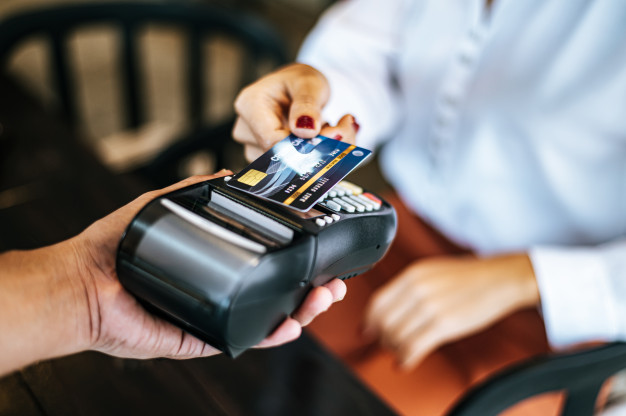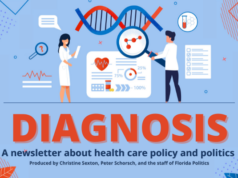
Cyber crime is definitely on the rise, and many of the most troubling criminal acts center around in-person and online payment methods. According to the Insurance Information Institute (III), new credit card account fraud was the most popular identity theft crime in 2019 (with 246,763 reports), followed by miscellaneous identity theft (with 166,875 reports). Meanwhile, other types of fraud that take place with online payment methods include phishing scams, pagejacking and even merchant identity fraud.
The III also reports that there were 1,473 data breaches in 2019, which is an increase of 17 percent from the 1,257 that took place in 2018. During a data breach, hackers and thieves can get access to your personal information, including your Social Security number, your address and your credit card or debit card numbers.
With all this in mind, you may be wondering about the safest ways to pay for purchases when you’re shopping in a store or browsing the web. The good news is, there are plenty of in-person and online payment methods that have the technology and features to keep your personal information safe.
Secure online payment methods
If you’re hoping to make your transactions as secure as possible when you shop online, consider the following online payment methods.
Credit cards
By and large, credit cards are easily the most secure and safe payment method to use when you shop online. Credit cards use online security features like encryption and fraud monitoring to keep your accounts and personal information safe. Most issuers also offer zero fraud liability that ensures you won’t be on the hook for a cent in fraudulent transactions charged to your credit card.
Beyond the zero fraud liability coverage credit cards offer, you can only be legally liable for up to $50 in fraudulent charges on a credit card due to language in the Fair Credit Billing Act (FCBA).
See related: Best credit card sign-up bonuses
ACH payments
Automated Clearing House (ACH) payments let you transfer funds directly from your checking account to another bank account. This payment network adheres to plenty of security features that keep your banking information safe, such as encryption and the implementation of access controls.
Voice payments
According to the 2019 How We Will Pay Study, which was a PYMNTS and Visa collaboration, 31 percent of study respondents who own a voice device, like an Amazon Echo or Google Nest, use their device to make purchases. If you want your voice payments to be more secure, you should set up a credit card with zero fraud liability as your preferred payment method.
Secure in-person payment methods
Technology has also made in-person payments more secure than ever, and that’s especially true for those who make payments in person using a mobile device. The following in-person payment methods boast increased security features that help protect your personal information.
Credit cards with EMV chip technology
Where you once had to “swipe” your credit card to make an in-person payment, most credit cards today feature EMV chip technology instead of a magnetic strip. With EMV technology, the payment terminal reads your card for the unique, encrypted information transmitted by the chip on your card. Since the one-time use encrypted information is different for each transaction, this technology helps to eliminate counterfeit fraud.
EMV technology has expanded rapidly over the last decade, and that’s true globally and within the United States. According to a study from Thales Group, 63.8 percent of payment cards issued worldwide in 2019 used EMV chip technology.
Credit cards with contactless payment
Contactless payments use the same technology as EMV chip and pin credit cards. With a credit card that allows contactless payments, you’ll hold your card above the payment terminal and the terminal will receive an encrypted, one-time use code for the transaction.
Before the coronavirus pandemic, contactless payments were already on the rise and this trend has only been exacerbated by the pandemic. According to a study from Mastercard, contactless payments increased twice as fast as non-contactless payments at grocery stores and drugstores between February and March of 2020, when COVID-19 first emerged in the United States. Moreover, 80 percent of respondents to the Mastercard global consumer study said they use contactless payments for purchases.
Payment apps
Payment apps like PayPal, Google Pay, Apple Pay and Facebook Pay let you store multiple payment methods in one place for convenience and security. With a payment app, you can benefit from features like multi-factor authentication, notifications and even facial or fingerprint recognition.
With Apple Pay, for example, you have to have a pass code on your device, but you can also set up Face ID or Touch ID. Apple Pay also doesn’t actually store or have access to your payment information, and they don’t retain any transaction information that can be tied back to you later on.
Payment methods to avoid
While every type of payment method has some disadvantages, debit cards are probably the riskiest form of payment. Debit cards do offer the convenience of credit since you don’t have to carry cash around or write a check, but the funds you use are actually tied to your bank account.
Unlike credit cards that typically come with zero fraud liability and limit you to $50 in losses per the FCBA, debit cards only limit you to $50 in losses if you report the fraud to your account within two business days after you noticed it.
- If you report fraud more than two business days but less than 60 calendar days after your statement is sent to you, you could be on the hook for up to $500 in fraudulent charges.
- If you don’t report card fraud for 60 or more days after your statement is sent to you, you could lose “all the money taken from your ATM/debit card account, and possibly more; for example, money in accounts linked to your debit account,” according to the Federal Trade Commission (FTC).












